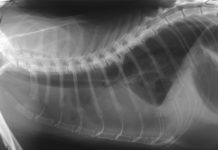Paraneoplastic syndromes in cats are a group of conditions, which result from the abnormal secretions of hormone or hormone-like product, which come from cancerous tumor or from the immune response of the body to the tumor. These particular secretions may affect the associated organs or tissues, as well as generate an abnormal clinical response in the cats dealing with cancer. Give this article a read and get to learn more about this feline malady.
Paraneoplastic Syndromes in Cats: What is this feline condition?

As what we have stated above, Paraneoplastic syndromes in cats are a cluster of conditions that result from the irregular secretions of a hormone or a hormone-like product that come from the cancerous tumor or from the immune response of the body to a certain tumor. These specific secretions might affect the organs or tissues associated, as well as produce an anomalous clinical response in cats who are dealing with cancer.
Moreover, a neoplasm is another term for a tumor, and para is a Greek word, which is typically used in denoting something close to another thing. Literally, paraneoplastic means near a tumor. The paraneoplastic syndromes in cats may affect a range of areas of the cat, as well as may occur before or in association with the symptoms of nearby tumor.
Furthermore, paraneoplastic syndromes refers to a sequence of side effects, damage, or some other structural or cellular changes, which happen in the tissues near or surrounding the tumors.
Causes of Paraneoplastic Syndromes in Felines
The primary cause of paraneoplastic syndromes in cats is several bodily tumors, both non-cancerous and cancerous. Though the exact mechanisms of the condition are unknown, most vets and rese4archers agree that the secretions from tumors may affect the nearby tissues and may cause damage, as well as degeneration. Further, these secretions might stimulate an immune response in the tissues, thus causing the symptoms. Cancerous or malignant tumors may often release substances, which may cause the white blood cells to improperly attack the tissues. The non-malignant tumors commonly release the hormones, which cause the abnormal growth or some other changes.
Symptoms of Paraneoplastic Syndromes in Felines
The different symptoms of paraneoplastic syndromes in cats may vary on the location and type of tumor. Further, symptoms may also vary in austerity contingent on the growth and progression of the tumor. The signs of paraneoplastic syndromes in cats include the following:
- Loss of appetite
- Weight loss
- Loss of pigment on paws or some other areas
- Alopecia
- Rash
- Weeping or open wounds on the toes
- Hairless and shiny patches of the skin, especially on the stomach area
- Pustules or open wounds on the skin
Prognosis of Paraneoplastic Syndromes in Felines

The prognosis of paraneoplastic syndromes in cats will start with the vet ruling out other, alike conditions. The skin scrapings of any sores and some other tissue samples might be sent off by the vet to an independent lab for analysis. Additionally, a complete blood panel may also rule out systemic diseases or infection. Furthermore, blood thyroid tests may rule out hyperthyroidism or hypothyroidism that will often present with the same symptoms.
Moreover, a thorough physical test of the cat, along with a thorough medical history of the progression of the symptoms, may also be essential in the prognosis of the condition. Further, you also need to provide the vet with the estimate dates of when the symptoms has first appeared, together with any changes on the condition. In case the cat or its relatives have a known history of cancer, this may be an important info as well.
Since the diagnosis of these syndromes depend on the identification of the presence of one or more tumors, the vet may also request several imaging tests. These might range from x-rays to CT scans or MRI or even ultrasound, varying on the suspected location of the tumor. For some of these types of procedures, the cat may need to be at least slightly sedated and go under general anesthesia.
Moreover, having the cat quiet and calm may produce the best images, as well as will allow the vet the best look in the body of the cat. In addition, anesthesia comes with the inherent risks. Prior to going under anesthesia, the vet may run some bloodwork and listen to the cat’s heart, in order to ensure it is really healthy enough to undergo the process.
Treatment for Paraneoplastic Syndromes
The treatment for paraneoplastic syndromes in cats is highly individualized and may depend on the location, stage, and type of the tumor. In case the cat has been suffering from wasting and anorexia, it’ll be necessary to place them on a nutritional support, and stabilized right before further invasive treatments may start. The invasive treatment is important, under any circumstances, as the kind of tumor is most probably of a highly malignant kind. The vet may remove the tumor, when possible. Further, chemotherapy might also be a choice, if the tumor is of the kind that’s likely to respond to chemical therapy. The doctor will be the one to discuss these options to the owner.









